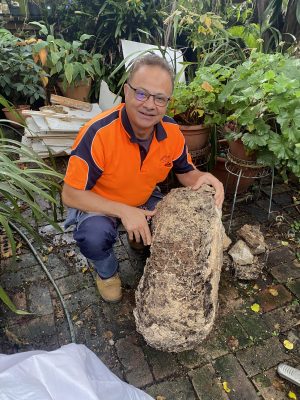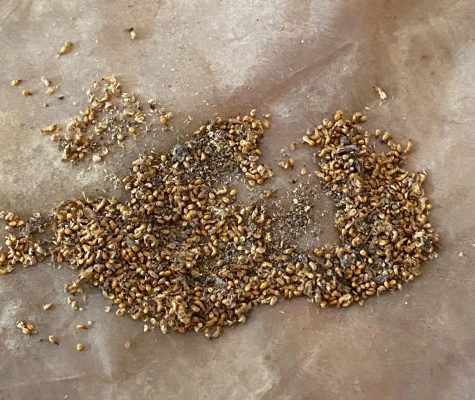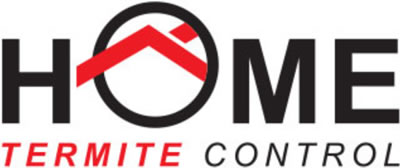Effective Treatment for Termites: Safeguarding Your Home from Infestation

Struggling with termites? Effective treatment for termites and strategies to keep them out permanently are crucial concerns for homeowners. This article cuts through the noise and offers you proven solutions to target termites swiftly and thoroughly. From recognizing signs of infestation to applying direct treatments and adopting preventative tips, we lay out every step to safeguard your home against these destructive pests. Prepare to equip yourself with the knowledge to turn the tide against termites and maintain a sturdy, termite-free home.
Key Takeaways
- Termites come in different species, each with specific behaviors and impacts, requiring identification of the type of termite for effective treatment strategies, which include soil treatments, bait stations, and direct wood treatments.
- Termite detection and prevention are vital, involving regular home inspections for signs of activity, professional extermination services, and long-term strategies to mitigate re-infestation such as removing food sources and installing physical barriers.
- Choosing the right pest control service is crucial, demanding thorough evaluation of expertise, treatment options, and understanding of warranties to ensure comprehensive protection against termites.
Understanding Termite Species and Their Impact

There are hundreds of species of termites worldwide, but only a few of them, each with unique behaviours and preferences, will impact your home. Recognizing which type of termite has infiltrated your property is the first step in a successful termite treatment. Whether it’s subterranean termites burrowing beneath your foundation or drywood termites nesting within your cherished furniture, the damage they inflict can be catastrophic. These insects consume wood and cellulose-containing materials, and their destruction appetite can compromise your structural integrity. Some common types of termites include:
- Subterranean termites
- Drywood termites
- Dampwood termites
Identifying the specific type of termite infestation is important to treat and prevent further damage effectively.
Successfully combating termites involves more than just killing them; it requires a deep understanding of their species, behaviours, and the warning signs they leave behind. For example, you can eradicate dampwood termites in your subfloor by fixing drainage and improving ventilation! Such insight helps in devising a customized and effective extermination strategy. We should examine the unique traits of these wood-eating pests to aid in their identification and selection of appropriate termite treatment methods. Some key traits of termites include:
- They are social insects that live in colonies
- They have straight antennae
- They have a thick waist fused in their head (like cockroaches, their ancestors!)
- They have straight, beaded wings that are the same sizes. Hindwings are the same size as the forewings.
- They feed on wood and cellulose materials.
Understanding these traits, you can better identify termites and choose the most effective treatment methods.
Recognizing Subterranean Termites
Tackling the subterranean termite that is a formidable opponent is not an easy job. They appear pale and ant-like, with a ravenous appetite for wood. These are the most destructive species in Australia, capable of forming termite colonies that range from a few hundred thousand to a staggering million members. Within a termite colony, their method of working involves constructing mud tubes from soil to wood, which serve as protected highways for their relentless foraging. The pale colour and size of these termites offer a visual cue for identification, but it’s the devastation they wreak on wooden structures and foundations that truly unmasks their presence.
Learning to spot these intruders takes a keen eye. Look for their signature mud tubes, especially in crawl spaces or near the foundation of your home. These tubes clearly indicate subterranean termite activity and a call to arms for homeowners. Comprehending the size and abilities of these colonies is key to devising a solid defense strategy aimed at eliminating existing infestations and warding off future termite invasions.
Identifying Drywood Termites
Drywood termites are the stealthy squatters of the termite world, setting up residence directly within wooden structures and furniture. These termites are more discreet in their activities than their subterranean counterparts, often leaving little evidence of their presence until significant damage has been done. One tell-tale sign of their occupation is the rippling of paint on wooden surfaces, hinting at the chaos beneath.
Unlike the mud-loving subterranean species, dry-wood termites require no contact with the soil and can thrive in the very materials that comprise your home. This ability to live undetected within wood makes early identification challenging but not impossible. Vigilance in monitoring your wooden treasures for any irregularities can lead to the early detection and eradication of these unwelcome tenants, as dry wood termites live within the wood itself.
Initial Steps in Termite Detection

Before initiating a fight against termites, their presence must be confirmed first. Detecting these covert creatures requires a meticulous approach; overlooking even the slightest hint of termite activity can result in large-scale infestations that threaten the stability of your home. Worker termites, which resemble white ants, often lurking under rocks or within wood mulch, a clear sign of their wicked activities.
Your home inspection should begin with a visual assessment, both inside and out. The exterior, particularly the foundation, can betray signs of termite invasions through visible mud tubes or wood damage. Inside, the integrity of wood structures should be scrutinized for any indications of termite activity, such as hollow sounds when tapped or termite droppings.
Inspecting for Termite Activity
The battle against termites starts with vigilance. Inspecting your home for signs of termite activity is a critical reconnaissance mission. Keep an eye out for:
- Mud tubes
- Termite droppings
- Damaged wood
- Seasonal swarms or discarded wings
- Occasionally, termites may be heard before they’re seen; a faint, rapid tapping noise known as head-banging is a distress signal among termites that sharp-eared homeowners might detect.
Your DIY inspection toolkit should include the following:
- A keen sense of observation
- A simple tap test to identify hollow-sounding timber, which suggests termite damage beneath the surface
- Looking for small piles of wood shavings and tunnels in wood, both classic indicators of termite presence
Regular inspections and maintenance can halt termites, preventing large infestations from taking root in your home.
Professional Termite Inspection
There comes a time when the expertise of a professional exterminator is indispensable. A professional termite inspection is a critical component in formulating an effective termite treatment strategy. These specialists possess the training and experience necessary to accurately assess the extent of a termite infestation, which often requires an eye trained to spot the subtlest signs of termite activity.
The detailed report from a professional inspection is a treasure trove of information, providing homeowners with a comprehensive overview of the current termite situation. This report serves as the foundation upon which a tailored and precise plan of attack can be built, ensuring that termite control measures are both efficient and effective.
Proven Termite Treatment Strategies

Identifying termites is only half the battle; the next step is to engage them with proven treatment strategies. From creating impenetrable chemical barriers to deploying bait stations designed to collapse entire colonies, the options for termite treatment are as varied as they are effective. For subterranean termites, treatments can include a range of methods, such as:
- dusting
- Baiting
- installing Barriers
Quick and decisive action is paramount to address a termite infestation before the damage becomes irreversible. We should examine some time-tested termite treatment methods that can eliminate termites completely, preventing them from becoming a recurring threat.
Soil Treatments and Barriers
The first line of defence in termite control often lies beneath your feet. Soil treatments with liquid termiticides create an invisible fortress around your home, deterring subterranean termites from making contact with your foundation. When applied correctly, these chemical barriers can offer peace of mind for up to a decade, provided the treated soil remains undisturbed.
This form of termite treatment not only acts as a robust defence against current invaders but also secures your home’s perimeter against future termite attacks. By creating a toxic moat around your castle, you prevent termites from breaching your defences and ensure the longevity of your sanctuary.
Bait Stations and Ingestible Poisons
For a more covert approach, termite baits serve as Trojan horses, luring termites with the promise of sustenance only to deliver a fatal blow. These bait stations employ slow-acting insecticides that termites ingest and unwittingly transport back to their nests, spreading the poison throughout the colony and eventually leading to its downfall.
Bait stations are not just effective; they are also designed with environmental and safety concerns in mind. Without the need for invasive liquid chemicals, these stations are safe for use around families and pets while still packing a powerful punch against termite populations. Multiple bait stations, often a dozen or more, are typically required to encircle a property, providing a comprehensive surveillance and control network.
Direct Wood Treatments
Sometimes, the best form of attack is direct. Direct wood treatments involve applying protective coatings to wood surfaces, creating a barrier that termites cannot penetrate. These treatments can protect your timber structures from termite damage for years, offering a potent shield against these persistent pests.
While sprays and spot treatments are commonly used, essential oils have emerged as a more natural alternative, especially effective against drywood termites. By targeting the material termites eat, these treatments eliminate current infestations and safeguard your wood structures from future termite attacks.
Using these essential oils can provide a safe and eco-friendly solution to termite control.
Long-term Prevention of Termite Reinfestation

The war against termites doesn’t end with their elimination. Long-term prevention strategies are crucial to ensure that they don’t mount a comeback once you get rid of termites. This involves making your home less attractive to termites by removing food sources, minimizing moisture, and installing physical barriers that deter termites from returning. Post-treatment vigilance and killing termites that may reappear are essential to maintain an environment that is hostile to termites and prevents their reestablishment.
We should look at specific strategies that you can use to keep your home termite-free in the long run. By addressing the core attractants and vulnerabilities in your home’s defences, you can rest assured that termites will find no quarter within your walls.
Eliminating Food Sources and Moisture
Termites are attracted to moisture and darkness, with damp, hidden areas such as crawl spaces, basements, and attics serving as their preferred battlefields. By fixing leaks from fixtures and ensuring proper drainage around your property, you can remove the damp conditions that termites find so alluring. Furthermore, by removing excess timber and cellulose materials from around your property, you eliminate the termites’ food sources and their potential breeding grounds.
Regular property maintenance, including checks for damp conditions and removing wood piles and cellulose debris, is a critical strategy for long-term termite prevention. Such diligence starves termites of the resources they need to survive and thrive, effectively keeping them at bay.
Installing Physical Barriers and Repellents
In addition to chemical strategies, physical barriers provide a non-toxic and enduring solution to termite prevention. These barriers, ranging from polymer sheets with insecticide to stainless steel meshes, are designed to be impassable to termites, cutting off their access to your home.
Deploying these barriers during the construction phase can offer lifelong protection against termites. For existing structures, retrofitting these defences can effectively prevent termites from infiltrating and causing further damage. Creating a physical blockade ensures that termites find no entry point to exploit.
Regular Monitoring and Maintenance Checks
The efficacy of termite prevention measures can fluctuate due to environmental factors and the maintenance of bait systems, necessitating regular checks to ensure their continued effectiveness in preventing future infestations.
Here are some recommendations for inspections of bait systems:
- Inspections should occur at least once a year.
- More frequent inspections may be needed in areas of heightened termite risk
- The purpose of inspections is to catch any early signs of termite activity
By following these recommendations to kill termites, you can stay on top of termite prevention and protect your property.
Disturbances to soil treatments, such as those caused by landscaping or excavation, can compromise the protective barriers around your home. Regular monitoring and maintenance checks are essential to identify and rectify any breaches in your defences promptly, maintaining the integrity of the termite treatments and ensuring your home remains secure.
Choosing the Right Pest Control Service

When it’s time to seek professional help, selecting the correct pest control service is a decision that needs careful consideration. The best defence against termite infestations is a competent pest control service that:
- Adheres to legal requirements such as licensing, and insurance
- Provides customer satisfaction and has a good reputation
- Can be assessed through reviews and personal recommendations
When searching for a pest control service, it’s important to compare services, gather multiple quotes for competitive pricing, and comprehend the offered guarantees. This comprehensive approach will steer you towards a pest control company committed to fully resolving your termite problem.
Evaluating Pest Controllers’ Expertise
A seasoned pest control service brings a wealth of experience and a methodical approach to tackling termite infestations. Their ability to deliver customized solutions tailored to your specific circumstances sets them apart. Versatility is also key; a service adept at both residential and commercial pest control can adapt its strategies to a range of environments.
When evaluating pest control companies, assess their competency, longevity, and customer feedback. Certification, licensing, and a clean track record are non-negotiable, ensuring that your chosen company is equipped to protect your home for years to come.
Understanding Treatment Options and Warranties
When it comes to termite treatment, knowledge is power. Understanding the nuances of the warranties offered by pest control services can save you from future headaches. A warranty outlines the protection you receive post-treatment and the company’s confidence in its services. To ensure you’re adequately protected, you must inquire about the warranty details, read the fine print, and comprehend the terms and coverage.
Remember that lengthy warranties may come with conditions such as periodic check-ups, which could entail additional costs. These are necessary to maintain the warranty’s validity over time, such as a 10-year plan, so it’s important to factor these into your long-term termite management budget.
Summary
Knowledge and vigilance are your greatest allies in the quest to protect your home from termite infestation. From recognizing the signs of termite presence to deploying strategic treatments and preventative measures, every step is vital in ensuring the fortification of your home against these silent destroyers. By choosing the right pest control service and understanding the treatment options and warranties available, you can rest assured that your home will stand strong against termite attacks, safeguarding your peace of mind for years to come.
Frequently Asked Questions
How can I tell if I have a termite infestation?
You can tell if you have a termite infestation by looking for signs such as mud tubes, damaged wood, termite droppings, discarded wings, or swarms. Additionally, you might hear a faint tapping noise, known as head-banging.
What is the difference between subterranean and drywood termites?
The main difference between subterranean and drywood termites is that subterranean termites require soil contact and mud tubes. In contrast, drywood termites live within wooden structures and furniture, often causing damage without being easily detected.
Can I perform termite treatment myself, or should I hire a professional?
It’s best to hire a professional for termite treatment because they have the expertise and tools for an effective and long-lasting solution.
How often should I have my home inspected for termites?
You should have your home inspected for termites at least annually or more frequently if you live in a high-risk area or have a history of termite issues. Regular inspections are important.
What should I look for in a termite treatment warranty?
When evaluating a termite treatment warranty, it’s important to consider the duration, coverage, and maintenance conditions, such as regular inspections, to ensure comprehensive protection against future infestations.
